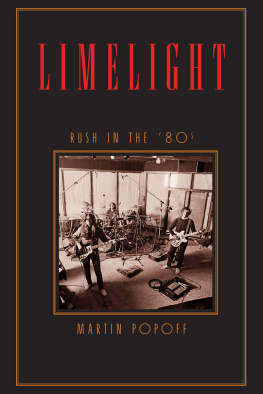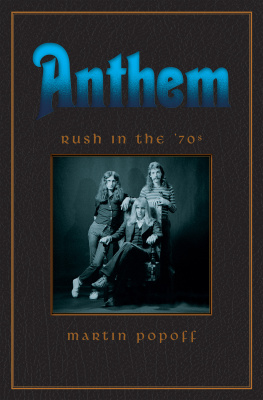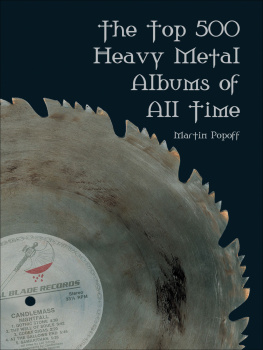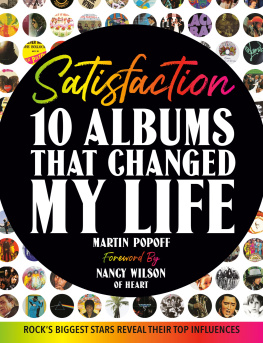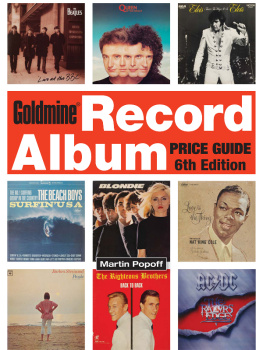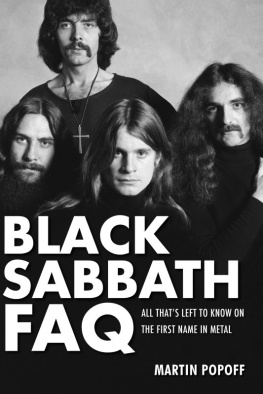Martin Popoff - Limelight: Rush in the 80s
Here you can read online Martin Popoff - Limelight: Rush in the 80s full text of the book (entire story) in english for free. Download pdf and epub, get meaning, cover and reviews about this ebook. year: 2020, publisher: ECW Press, genre: Art. Description of the work, (preface) as well as reviews are available. Best literature library LitArk.com created for fans of good reading and offers a wide selection of genres:
Romance novel
Science fiction
Adventure
Detective
Science
History
Home and family
Prose
Art
Politics
Computer
Non-fiction
Religion
Business
Children
Humor
Choose a favorite category and find really read worthwhile books. Enjoy immersion in the world of imagination, feel the emotions of the characters or learn something new for yourself, make an fascinating discovery.
- Book:Limelight: Rush in the 80s
- Author:
- Publisher:ECW Press
- Genre:
- Year:2020
- Rating:5 / 5
- Favourites:Add to favourites
- Your mark:
- 100
- 1
- 2
- 3
- 4
- 5
Limelight: Rush in the 80s: summary, description and annotation
We offer to read an annotation, description, summary or preface (depends on what the author of the book "Limelight: Rush in the 80s" wrote himself). If you haven't found the necessary information about the book — write in the comments, we will try to find it.
Limelight: Rush in the 80s — read online for free the complete book (whole text) full work
Below is the text of the book, divided by pages. System saving the place of the last page read, allows you to conveniently read the book "Limelight: Rush in the 80s" online for free, without having to search again every time where you left off. Put a bookmark, and you can go to the page where you finished reading at any time.
Font size:
Interval:
Bookmark:

Limelight
Rush in the 80s
Martin Popoff

Get any pile of Rush fans together at, say, one of the many legendary RushCons over the years, and you can quickly elicit strong opinions on what parts of the bands 80s catalogue are valid and which are not.
It was an action-packed decade for the boys, as they finally found themselves, by dint of their own wiles and will, in the top quartile, not so much with Permanent Waves but for sure come Moving Pictures, a red-and-black record accepted as the bands masterpiece.
With Signals, Rush started challenging expectations. The 80s will mess with your head, and Rush took to messing about with all the decade had to offer, enthusiastically so, given the guys predilection toward explorations of modernity. Keyboards and hairstyles in tandem, Geddy, Alex and Neil took the mile when offered an inch, and by the time we get to Power Windows and Hold Your Fire, Rush was an astringent, high-strung pop band, trendy keys and synths in excess.
Most fans went along for the trip, and if they werent always happy with records like Presto, the concert halls were still filled, as the band had no problem delivering the power trio power the fans expected during a show, aided and abetted by a deep catalogue of hits more analog.
And the productivity was impressive as well. Most 70s bands couldnt hold a candle to Rushs tally of seven studio albums and two double live spreads in the 80s, even if the guys decided to notch back on the mega-tours. Rush were regulars in Europe, but, never a world band, they began to visit less frequently, also cutting back on how much of the U.S. and Canada they would hammer at repeatedly.
As you may or may not know, Limelight: Rush in the 80s is the follow-up tome to Anthem: Rush in the 70s. That book looked at the long ramp-up to the Zeppelin-esque debut album in 1974 and the arrival of a transformational force in the guise of Neil Peart, sadly and shockingly deceased from brain cancer just as that book was getting ready to go to print. Peart, of course, became heralded as one of the greatest rock drummers of all time and certainly one of the most air drummed as early as his third record with the band, 2112. Anthem then examined the bands first live album, followed by A Farewell to Kings and Hemispheres, and all of a sudden, the 70s are over and its time for something fresh, including technological innovations as well as the rise of MTV and the age of video.
Limelight: Rush in the 80s is the story of these subsequent years, beginning a couple of weeks into the haties (as voiced by Morrissey) with the robust if brief Permanent Waves and bowing out in November of 1989 with Presto, a record that bucked so many trends, the band found themselves kind of marginalized, or more positively, defiantly singular, sounding like no one else while still essentially playing a form of mainstream pop.
Along the way, we hear from the myriad producers Geddy, Alex and Neil brought into the circle, not so much desperately but avidly, curiously, looking for inspiration from industry peers. Essentially what Peter Collins and Rupert Hine (and slightly less so Peter Henderson) brought was pop modernity, with the guys all too happy to push buttons on the latest toys to craft a sound more in keeping with what they saw as valid and au courant, the music of grown-ups. A contentious dynamic of the book, which I argue is borne out in the music and lyrics, is that the band was seeking the respect of folks they thought were smart, folks who had good taste. You may look at that as a negative, or you might see that as the guys enthusiastically participating in the hustle and bustle of the modern world, growing intellectually, not conceding that they themselves couldnt be new world men.
And becoming new world men meant that Geddy, Alex and Neil would develop interests outside of music, because, after all, wasnt music itself moving toward the idea of multimedia? Toward this end, toward becoming well rounded in effect, Renaissance men as the 80s wore on, the guys pulled back from touring, spending more time on family, travel and other creative pursuits. The business of Rush is very different in this book versus the first one, reflected in the vast difference between A Show of Hands and All the Worlds a Stage.
But this isnt the end of our story. Because of course Rush didnt stop at Presto, even if the band had slowed. More joy and much more heartbreak were to star-cross the lives of Geddy, Alex and Neil, and the story wouldnt be complete if we didnt march forward and meet the heroes of our tale at their own individual completions. Stay tuned as we continue this loud and loving march through time toward a conclusion that now, with the recent passing of the Professor, is very, very different and darker than when this trilogy began.
Martin Popoff
Most promising keyboard player of the year.
For all the turmoil in the music industry in the late 1970s, including the changings of the guard (from rock, quickly past punk into post-punk) to the recessionary year that was 1979 (saved barely by the arrival of The Wall, In Through the Out Door and The Long Run), Geddy Lee, Alex Lifeson and Neil Peart a.k.a. Rush kept moving forward from strength to strength. Their sixth album, Hemispheres, proved that the band could sell, and on tour excel, despite a record that was as anti-commercial as they get. Broken down, that record gave up a side-long song about Greek gods and a long instrumental, leaving room for only two short pieces, one of them heavy slide-rule metal (Circumstances) and the other hummable enough, but about trees fighting each other. But the awards kept coming, allowing for even more of the autonomy and validation the band attracted. By the end of the decade, Rush was undisputedly the biggest band from Canada.
Still, the band wasnt making a lot of money. Rush had moved away from the days of hit singles like Closer to the Heart and Fly by Night. But the financial situation wasnt dire, and there was a sense of generosity within the Rush camp. They wanted to give back, often playing B-city gigs that might not be particularly profitable. The band also poured a lot of their profits into making their show bigger and more extravagant any chance they got. Its a strategy that paid off: it made Rush, a still-small band in 1979 and 1980, look huge.
In tandem with the bands expanding maturity as a live act was their consistent growth from record to record. Permanent Waves would demonstrate a number of advancements, but these would be subtle, and in part driven by the guys changing up the environment in which they worked.
We were torn at that point with what kind of music we wanted to make, in terms of its length, recalls Geddy. We had fallen into this pattern of writing these really long pieces and that started to seem formulaic to us, predictable. Complicated musical part here, this is where we do the chorus, and it kind of got boring. So we thought, we still like to play long, complicated pieces. If we had our druthers, thats all we probably would do. And then there is the lyric thing. How do we bring that in and how do we keep improving? So we came up with this idea of trying to make the long pieces but have them much quicker. So over five, six minutes, as opposed to twenty.
Font size:
Interval:
Bookmark:
Similar books «Limelight: Rush in the 80s»
Look at similar books to Limelight: Rush in the 80s. We have selected literature similar in name and meaning in the hope of providing readers with more options to find new, interesting, not yet read works.
Discussion, reviews of the book Limelight: Rush in the 80s and just readers' own opinions. Leave your comments, write what you think about the work, its meaning or the main characters. Specify what exactly you liked and what you didn't like, and why you think so.

